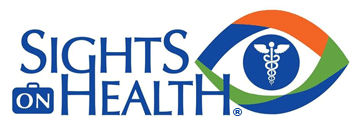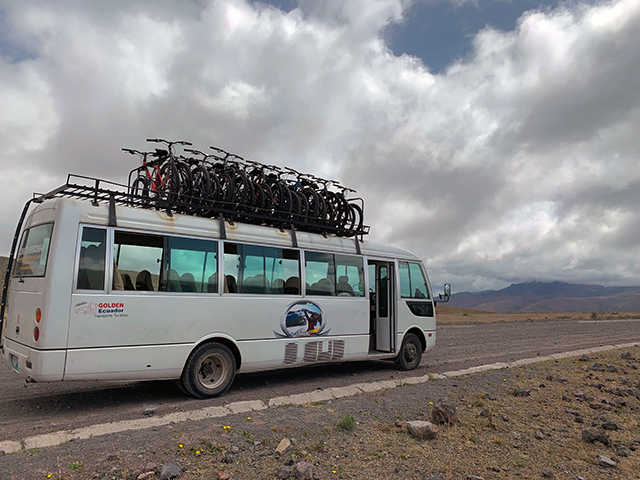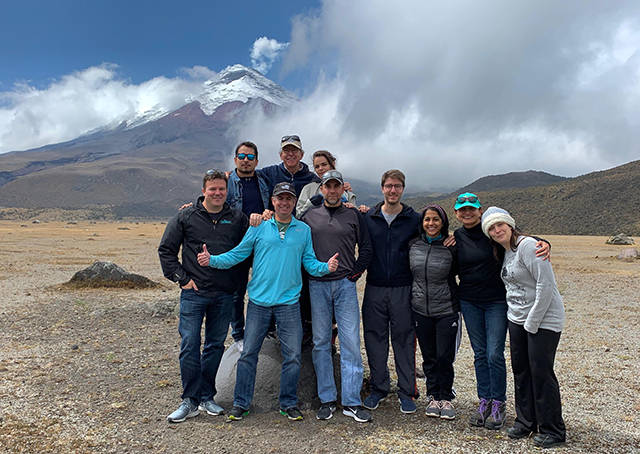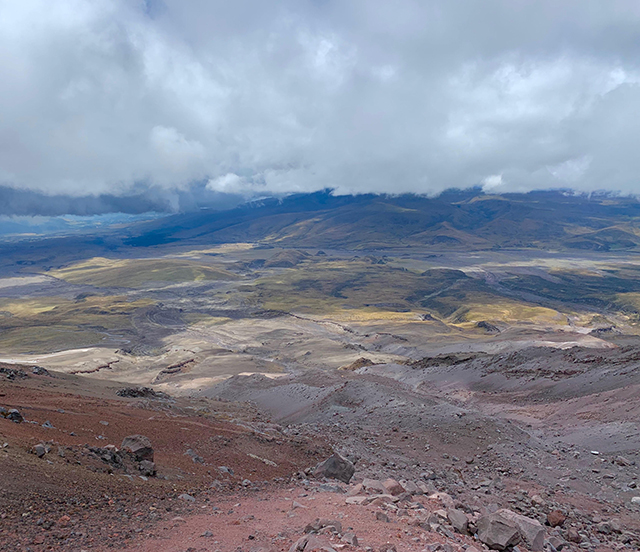This blog post is written by Pallavi Tatapudy, MS4 at Renaissance School of Medicine at Stony Brook University who served as co-leader of the 2017 medical and surgical mission to Sacred Valley, Perú organized by A Promise to Peru.
Today was a day of rest and adventure following a week of clinical activities. Some of our team members enjoyed a day exploring Quito, Ecuador before our flight at night back to the United States, while about ten of us were interested in hiking the Cotopaxi volcano. We woke up early and walked to the meeting spot a few blocks away from our hotel, La Casa Sol. We met our tour guides for the day who taught us interesting and important information as we traveled. For example, the section of the Pan-American Highway that passes through Ecuador is called “La Avenida de Volcanes.” There are four ecosystems in the national park, including grasslands, super grasslands, high mountains, and glaciers. Cotopaxi means “neck of the moon.” Volcanic activity is constantly monitored and safety precautions are taken. The national park was closed to any touristic activity for over one year due to increased volcanic activity in 2015 and 2016, and was reopened in October 2017.
The tour bus then stopped at a restaurant for breakfast, where we enjoyed pancakes with papaya and granola, omelets, bread and butter, juice, tea, and coffee. We bought hats and gloves there in preparation for the cold weather closer to the top of the volcano. We entered the national park and took a memorable group picture at a scenic point.
There were two paths to climb the volcano, a shorter one with a steeper incline and a longer one with a more gradual incline. Dr. Joseph Kristan and I climbed the steeper path and met our team members near the glaciers. We then rested at the refuge center which was located at an altitude of approximately 16,000 feet. Some adventurous folk then rode mountain bikes down the side of the volcano in weather that varied from cloudy to hailing to sunny. After many hours of intense physical activity, we then filled our stomachs with delicious potato soup, chicken, cold pasta salad, seasoned broccoli and cauliflower, and juice.
We returned to Quito by 5:15 pm to shower, pack, and prepare to leave for the airport. Everyone met in the lobby of the hotel by 7:30 pm to organize our personal luggage and the mission suitcases we were each responsible to take back. We carefully loaded the bus and left for the airport by 8:10 pm. During that final bus ride, Dr. Debra Messina shared some inspiring words with us and the final statistics for our 2019 cataract surgical mission in Ecuador.
We thanked Wilson Rosales who worked tirelessly and joyfully for our benefit while away from his family for several days. He did so much to make our stay seamless and well-organized. His efforts included coordinating airport transportation, meals that used safe water options and took food restrictions into consideration, our safety, transportation to and from the clinic everyday, any problems that arose in the clinic, the volcano excursion with tour guides, and more. Thank you, Wilson, for welcoming us to Ecuador and leading with your heart.
Debra Messina, M.D. – Team Leader
Cathy Roberts – Administrator
Christina Rager, M.D. – Critical Care Specialist
David Krebs, M.D. – Ophthalmologist
Allison Angelilli, M.D. – Ophthalmologist
Joseph Kristan, M.D. – Ophthalmology resident, Montefiore Medical Center
Alexandra Thanasoulis, R.N.
Lorena Chinchilla, COT
Frank Garcia, COT
Julia Colmenares – Nursing Assistant
Ken Roberts – Sterilization
Pallavi Tatapudy – Fourth-Year Medical Student, Renaissance School of Medicine at Stony Brook University
Ginger Thanasoulis – Translator
Michael McDonald – Alcon Representative





